WhatCauses Heel Pain?

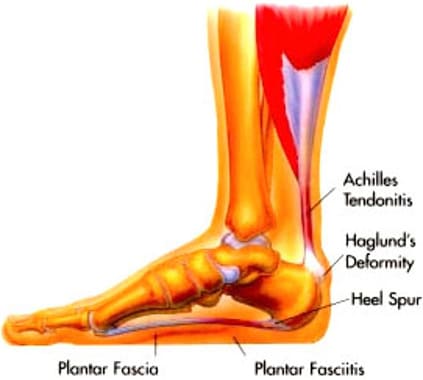 Heel pain is one of the most common problems associated with foot pain. The heel bone or calcaneus is usually the first part of the foot to hit the ground when landing on our feet. Since we usually land on one foot at a time, this means we are placing about 2 times our body weight on one area. Pain in the heel can be due to damage to the skin, tendons, nerves, soft tissue or bone.
Heel pain is one of the most common problems associated with foot pain. The heel bone or calcaneus is usually the first part of the foot to hit the ground when landing on our feet. Since we usually land on one foot at a time, this means we are placing about 2 times our body weight on one area. Pain in the heel can be due to damage to the skin, tendons, nerves, soft tissue or bone.
Pain from skin and soft tissue problems can be due to warts, plugged sweat glands, foreign bodies, bursitis, rash, cuts or cysts. Bone issues can be fractures, dislocations, infections, arthritis, spurs or tumors.
The most common heel pain is due to the tendons that attach to the heel- the achilles tendon and the plantar fascia tendon called plantar fasciitis.
What Causes Pain in the Bottom of the Heel?
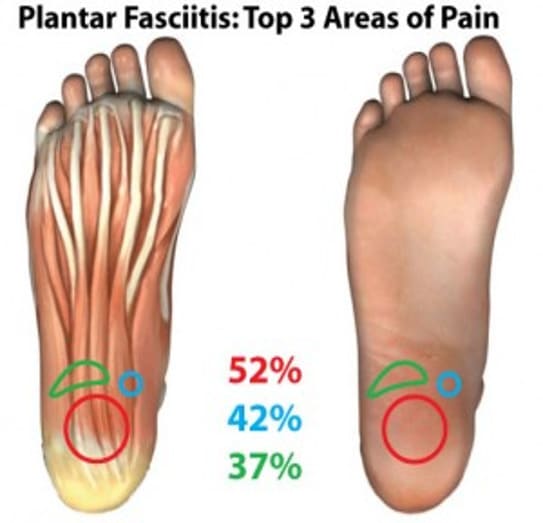 Pain in the bottom of the heel is usually due to plantar fasciitis. Two of the most common signs you probably have plantar fasciitis are pain with the first steps in the am or after sitting for awhile and pain that seems to start without any injury. The pain is due to the plantar fascial tendon being stretched and pulling at its attachment to the heel bone.
Pain in the bottom of the heel is usually due to plantar fasciitis. Two of the most common signs you probably have plantar fasciitis are pain with the first steps in the am or after sitting for awhile and pain that seems to start without any injury. The pain is due to the plantar fascial tendon being stretched and pulling at its attachment to the heel bone.
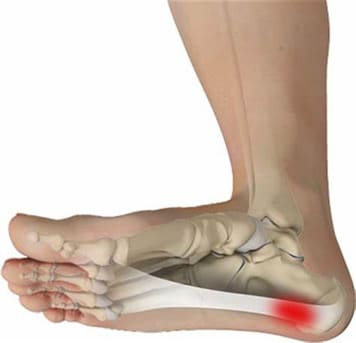 The plantar fascial tendon is a wide tendon that runs from the ball of the foot to the heel. As we walk the plantar fascial tendon stretches as we put weight on the foot. As the arch starts to fall, the plantar fascial tendon needs to stretch more. As we age the arch will start to fall, as evidenced by the fact the shoe size we wore when we were teenagers is now larger as we age, not because our feet have grown (that usually ends by age 16) but because the ligaments supporting the bones of the arch weaken. How far the arch will fall depends upon a person’s weight, activity, genetics and how good of shoes and supports we wear. If the arch starts to fall too much, the tendon will start to tear at the ball of the foot, the arch and/or at the heel causing pain. Sometimes the tendon will also pull so hard at its attachment into the heel bone that it causes irritation of the bone and the bone reacts by producing a bone spur.
The plantar fascial tendon is a wide tendon that runs from the ball of the foot to the heel. As we walk the plantar fascial tendon stretches as we put weight on the foot. As the arch starts to fall, the plantar fascial tendon needs to stretch more. As we age the arch will start to fall, as evidenced by the fact the shoe size we wore when we were teenagers is now larger as we age, not because our feet have grown (that usually ends by age 16) but because the ligaments supporting the bones of the arch weaken. How far the arch will fall depends upon a person’s weight, activity, genetics and how good of shoes and supports we wear. If the arch starts to fall too much, the tendon will start to tear at the ball of the foot, the arch and/or at the heel causing pain. Sometimes the tendon will also pull so hard at its attachment into the heel bone that it causes irritation of the bone and the bone reacts by producing a bone spur.
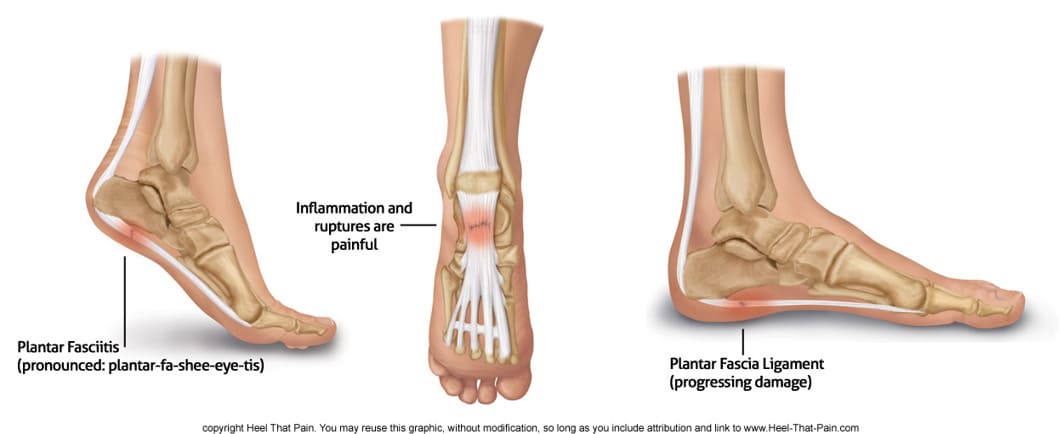 Generally, about 5% of the time the heel spur does cause most of the pain. Just because you have a heel spur doesn’t mean you need to have surgery. However, sometimes the spur
Generally, about 5% of the time the heel spur does cause most of the pain. Just because you have a heel spur doesn’t mean you need to have surgery. However, sometimes the spur 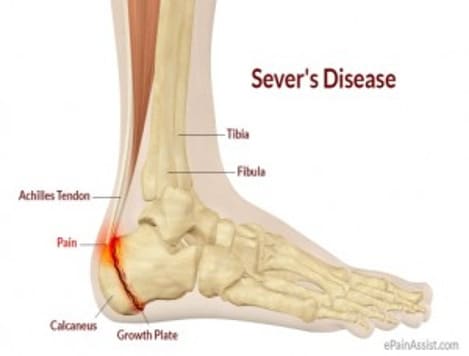 will not grow straight out but can actually curve up at the end and cause a tearing of the tissue surrounding the spur and in these cases, the spur will need to be surgically removed.
will not grow straight out but can actually curve up at the end and cause a tearing of the tissue surrounding the spur and in these cases, the spur will need to be surgically removed.
Heel Pain in Kids is called Sever’s Disease- calcaneal apophysitis. It will generally affect kids aged 8-14 years of age. The same reason a person gets plantar fasciitis due to the arch falling, is why kids get heel pain. Kids with flat feet are more likely to develop Sever’s Disease.
What Causes Pain in the Back of the Heel?
Pain in the back of the heel is usually due to achilles tendonitis as the achilles tendon attaches into the heel bone, a bone spur called Haglund’s Deformity or bursiitis.
The bone spur is from the achilles tendon rubbing on the upper back end of the calcaneus thus irritating the bone and the bone reacts by placing more bone down- a heel spur..
Causes of pain in the back of the heel is due to a tight achilles tendon, too much rotation of the heel from supination or pronation and/or injury.
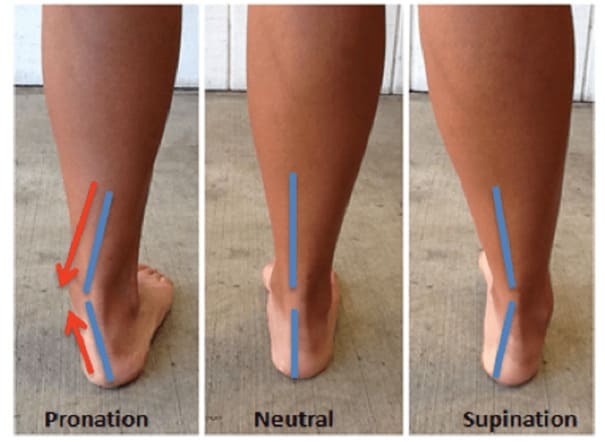
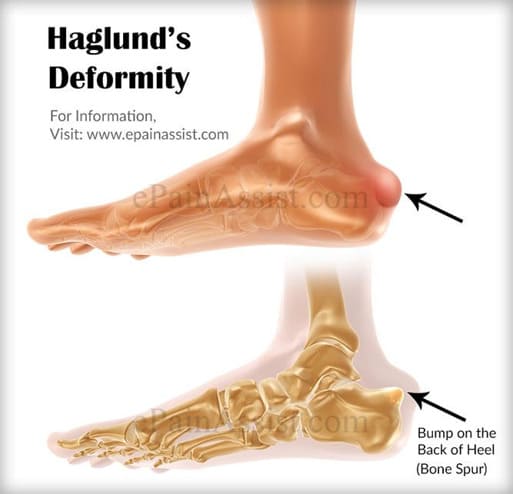
How Can Heel Pain Be Treated?
Unless the pain started due to an injury, the reason a person gets plantar fasciitis is the arches are falling.
1. Arch supports for heel pain.
 The arch support needs to go the full length of the plantar fascial tendon which runs from the heel to the ball of the foot. Many supports and heel cups may provide some relief but if they end mid arch it is like supporting a bridge at one end at the heel but then only supporting the other end of the bridge part way down, thus the arch will still fall.
The arch support needs to go the full length of the plantar fascial tendon which runs from the heel to the ball of the foot. Many supports and heel cups may provide some relief but if they end mid arch it is like supporting a bridge at one end at the heel but then only supporting the other end of the bridge part way down, thus the arch will still fall.
When getting an arch support, you must make sure you are getting the support that is for your foot type- average or flat.

J1 insoles for average arches. The arch supports provide 3 point correction in the heel, arch and forefoot.

Patented j1 insoles for flat feet. No other over the counter arch support corrects in all 3 areas of the foot like the patented design of j1 insoles for flat feet.
2. Stretching Exercises for Heel Pain
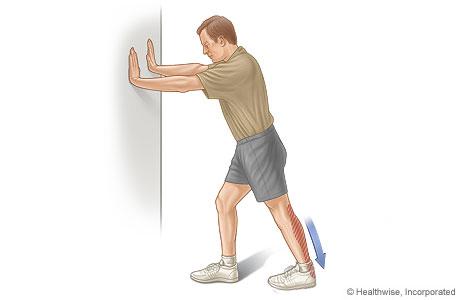 Calf stretch: To relieve tight tendons, place your hands on a wall. Place one foot behind the other and bend your front knee toward the wall until you feel the back of your heel stretching. Make sure the back foot is straight, not turned outward. While stretching, act like you are squashing a bug with the back of the heel to get maximum stretch of the achilles tendon. To get even more stretch, move your hips towards the front foot and rotate inwards with the hips. Hold the stretch for 15 seconds. Switch your feet and repeat 10 times each side 2-3 times per day.
Calf stretch: To relieve tight tendons, place your hands on a wall. Place one foot behind the other and bend your front knee toward the wall until you feel the back of your heel stretching. Make sure the back foot is straight, not turned outward. While stretching, act like you are squashing a bug with the back of the heel to get maximum stretch of the achilles tendon. To get even more stretch, move your hips towards the front foot and rotate inwards with the hips. Hold the stretch for 15 seconds. Switch your feet and repeat 10 times each side 2-3 times per day.
Golf ball/tennis ball/frozen water bottle roll: Place a ball on the ground and position the arch of your foot over the ball. Roll your foot in a rotating or forward motion to loosen the fascia located on the bottom of your feet. For a firmer touch, use the golf ball.
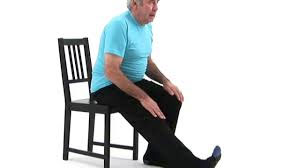 Hamstring Stretch: Stand with your feet parallel and straight forward with the feet lined up . While holding onto the back of a chair lean at the waist. Keep the back and knees straight. Lean down until you start to feel a stretch in the hamstrings (back of the thigh muscles) and then lean the buttocks back getting more of a stretch.
Hamstring Stretch: Stand with your feet parallel and straight forward with the feet lined up . While holding onto the back of a chair lean at the waist. Keep the back and knees straight. Lean down until you start to feel a stretch in the hamstrings (back of the thigh muscles) and then lean the buttocks back getting more of a stretch.
Another hamstring stretch is sitting in a chair. Make sure the foot is slightly turned in to get the most stretch.
3. Cortisone Shot or Anti-inflammatories for Heel Pain
With the heel being inflammed, reducing this swelling will reduce pain. An anti-inflammatory will reduce this swelling and pain. Icing also helps. A cortisone shot may also be indicated, especially if the pain has been present for more than 1 month. The cortisone shot works because it chemically breaks up scar tissue that can build up from an injury. When we massage the heel we are trying to mechanically break up scar tissue. A cortisone shot doesn’t feel great to get but is the fastest way to get rid of heel pain.
4. Shoes
Shoes can make the heel pain better or worse and are sometimes the reason someone develops heel pain. Make sure the shoes are lined up in the back. The thickness of the heel needs to be equal on both sides. Many running shoes build up the inside of the heel as compared to the outside and this will cause our heel to tilt outwards. This heel counter also needs to be strong and not easily compressible.
When looking at the bottom of the shoes, make sure the shoe lines up as straight as possible from the heel to the toes. Too much angulation inwards as you get to the toes can also cause the foot to tilt outwards too much.




